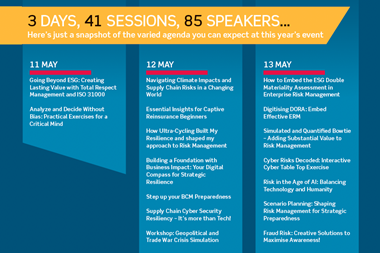Near misses and complaints provide some valuable pointers for risk management, says Jonathan Clark.
Risk management should be founded upon complete understanding of what is happening within both your business and its broader environment. Mechanisms that allow you to learn from your organisation's day-to-day experience can help translate risk management theory into practice. Incidents that do not lead to damage, often called "near misses", and customer complaints are both excellent pointers to business performance and can help in developing risk strategies.
Reviewing near misses and customer complaints allows you to look both inside and outside your operational processes and their implementation. It also allows you to examine a broader population than provided by a more conventional insurance based assessment of claims. For every 10 major injuries or 30 damage-only accidents, there are 600 near misses. For every reported product liability claim, there are many more complaints.
Near misses are as much incidents as accidents, the difference being that they have a zero cost. This often means that not enough attention is paid to them. But they can result from latent failures, for example, nonfunctioning safety valves found on inspection, bad work habits, or undesirable work situations such as untidy or unclean work areas.
An example is the supermarket where a routine audit reveals a number of out of date goods on the shelves. To date, there have been no claims, but detailed investigation reveals a number of customer complaints in which goods have been replaced. The business has to decide if this is a risk worth taking in an area where customer confidence can be rapidly destroyed.
The detailed investigation of accidents (often leading to claims) is a broadly established pattern. Not all businesses undertake a detailed investigation of root causes, however. This can lead to a less valuable investigation methodology.
Investigating incidents should involve the personnel on the ground who have the experience and knowledge to help. Following a near miss, you need to establish how and why it happened and look for the root cause. You should also investigate the management systems failures that underly most near misses. Such failures will affect the performance of your business. If wrongly evaluated, they may lead to strategies of risk avoidance, where reduction would be more appropriate.
You can quantify the success (or otherwise) of risk programmes by the reduction in near misses. You can also intervene if management procedures are failing.
There are similar considerations with complaints. A complaint means that the customer is offering you the opportunity to sort matters out and to keep their business. Some organisations that deal with complaints effectively have built brands through a "no quibble" policy. An opportunity to exploit what is a risk management process has to be attractive.
You need a managed process to handle complaints. You should encourage your front line staff to own complaints, and have formal written procedures.
Drawing up a resolution menu can involve options such as providing an apology, providing an explanation, and giving a clear assurance that the problem will not be repeated. You need to act to put things right. But you should only offer financial compensation where relevant. If it is a goodwill gesture, you should make this clear.
Having produced a resolution menu, you need to establish monitoring mechanisms to ensure problems that are discovered through customer complaints are not repeated. Look at complaints positively. They may point out weaknesses within your business and provide an opportunity for improvement. Resolving them quickly and effectively gives your customer something positive to say about your business, and reduces the risk of losing business.
Complaints also offer an inexpensive source of market research, to which you can link your risk management strategies and business planning. They allow you to understand how customers interpret advertising and sales collateral, whether products and services meet customer expectations and where your business needs to improve. A noticeably increasing number of complaints will help alert you to pinpoint weaknesses.
Complaints, may only be the tip of the iceberg, and part of the programme might be a regular survey of customers to track the non-complainers.
--
Jonathan Clark is director of strategic operations development for the UK, Europe and Africa, and Asia, Crawford & Company, Tel: 020 7265 0611, e-mail: jonathan.clark@crawford-thg.com .



















